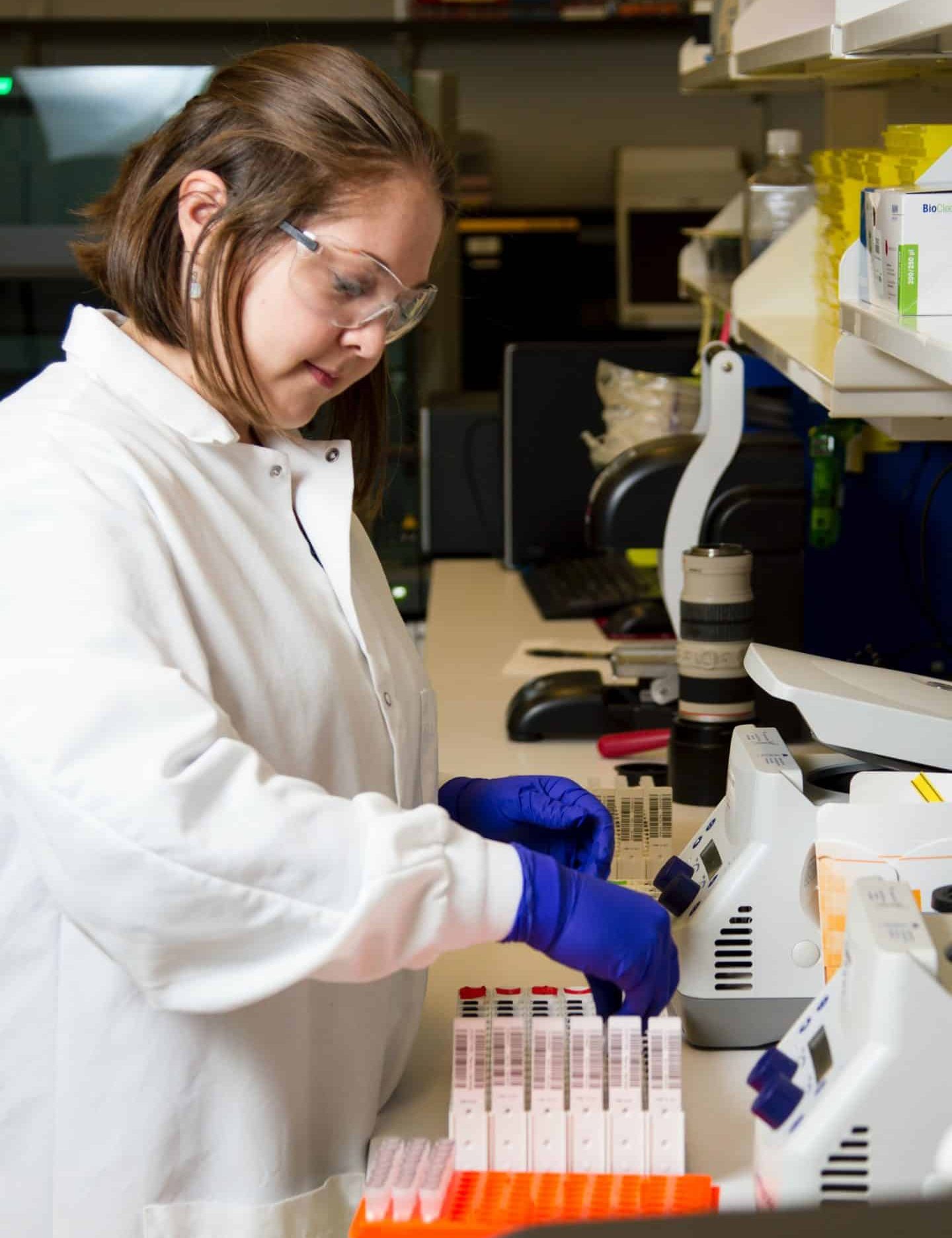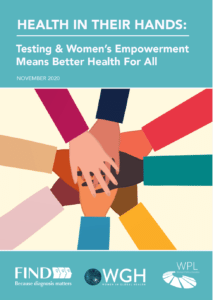Health in their hands: Testing
Men and women are all likely to need diagnostic tests at some time in their lives, and some of the barriers identified in our report may be common to both sexes. In some areas of health, there may be a greater testing gap for men than women because social norms encourage men to take greater health risks and focus less on prevention. Women need tests for conditions and diseases common to both sexes (e.g. HIV/AIDS, COVID-19) and they also require tests for conditions unique to women (e.g. antenatal tests related to pregnancy). Women’s reproductive role means the average woman will be likely to need more diagnostic tests during her lifetime than the average man.
The Foundation for Innovative Diagnostics (FIND) and Women in Global Health have joined forces to gather evidence on women’s access to testing and explore the potential of women as drivers of change in health systems, to help close the testing gap that is holding back universal health coverage (UHC) and health for all. The result is this report, entitled Health in their hands: testing & women’s empowerment means better health for all.
Although some of the obstacles described in our report are experienced by women in all countries, the focus of this report is on women in low- and middle-income countries, who face the greatest burden of infectious, non-communicable diseases and maternal mortality and have least access to diagnostic testing.
We hope this report will start a global conversation that leads to investment in women’s health through reaching women with diagnostic testing. We also hope this report will lead to a new focus on the role women play as drivers of diagnostic testing for the whole of society.

 Key messages
Key messages
- Testing and knowing their health status empowers women to better manage their health and plan their lives.
- Universal health coverage (UHC) cannot be achieved without closing the testing gap and must address the barriers that impede women’s access to testing.
- Action on testing is most urgent in low- and middle-income countries, where women face the greatest burden of disease but have least access to diagnostic testing.
- There is lack of investment in and limited data, research and evidence on women’s health and testing.
- When empowered, female healthcare workers will scale up testing for everyone.
- Women’s leadership – at community, health system and political levels – can drive access to testing.
Key findings
- The tests women need are often not available in health systems.
- Gender inequality creates information, financial and cultural barriers for women to access testing.
- Women lack trust in testing services, and may fear procedures, diagnosis, and stigma.
- Barriers to testing are compounded for marginalized women, especially in humanitarian contexts.
- Female health workers can scale up testing for everyone, if enabled with training, resources, and decent work.
- Taking testing to women at home and work and self-testing can expand testing to more women.
Recommendations
- Prioritize and invest in diagnostic testing as an essential component of UHC. Include access to testing as a commitment in the Political Declaration for the 2023 UN High-Level Meeting on UHC.
- Collect data and conduct research on access and barriers to testing, including cost effectiveness studies to track the return to investment on testing and early, accurate diagnoses.
- All countries should adopt Essential Diagnostic Lists that include a package of essential diagnostics for conditions specific to women.
- Invest in innovation for low cost, quality self-testing methods and point-of-care testing devices to meet the demands of a large and underserved market.
- Integrate testing into health systems at primary health care level and take testing as close to women’s homes and places of work as possible through female community health workers and self-testing, and in pharmacies.
- Understand and address cultural contexts for women. Engage peer mentors, women health workers, and address women’s mobility and security concerns. Respect women’s privacy and cultural norms. Prevent and reduce stigma.
- Reach the most marginalized women, ensuring that lack of information and affordability are not barriers to testing. Engage trusted channels to inform women about testing. Provide free services to the least able to pay.
- Build community trust in testing. Ensure all health facilities maintain community trust by eradicating stock outs of essential testing components and have enough staff trained to carry out essential diagnostic tests.
- Engage with men at community level through peer mentors to increase understanding of, and priority given, to routine screening and testing for women’s health and their own health.
- Enable women primary health care workers (community health workers, nurses, midwives) through training and resourcing to deliver testing in homes and communities. Invest in decent work and conditions to attract and retain female health workers.
- Engage women community leaders and women led community-based organizations to promote health literacy on testing and support women to attend. Women are more likely to take up testing if encouraged by women they trust.
- Support women political leaders to be testing champions within their countries and communities to promote investment in health to ensure all women can access testing and treatment.

